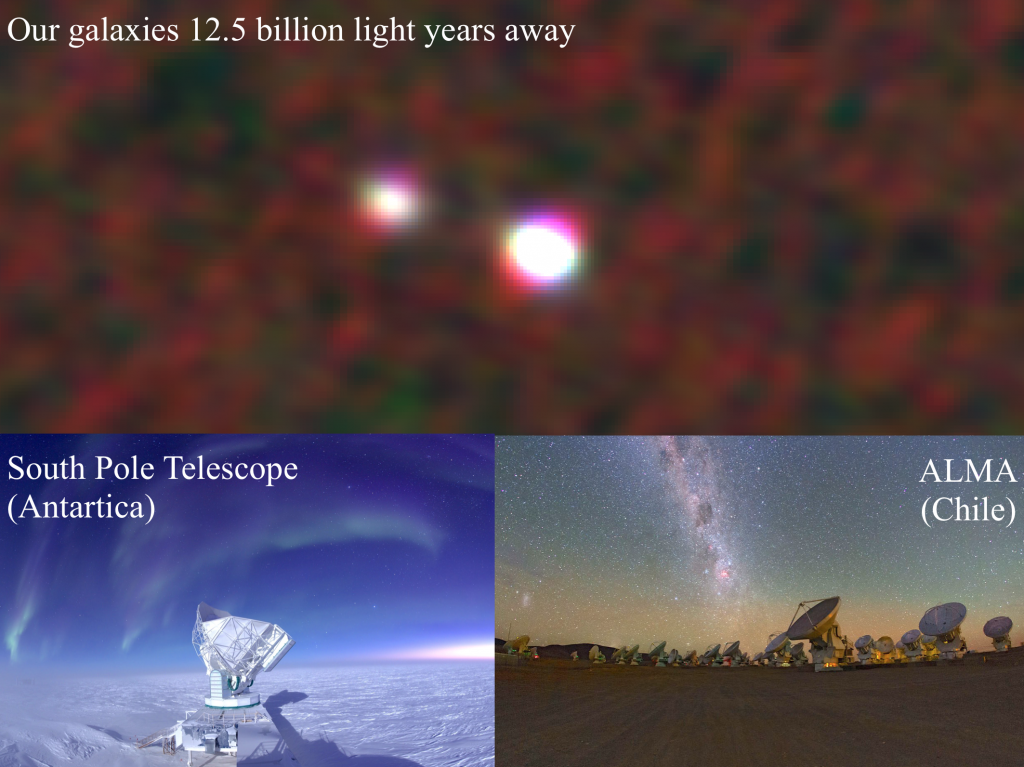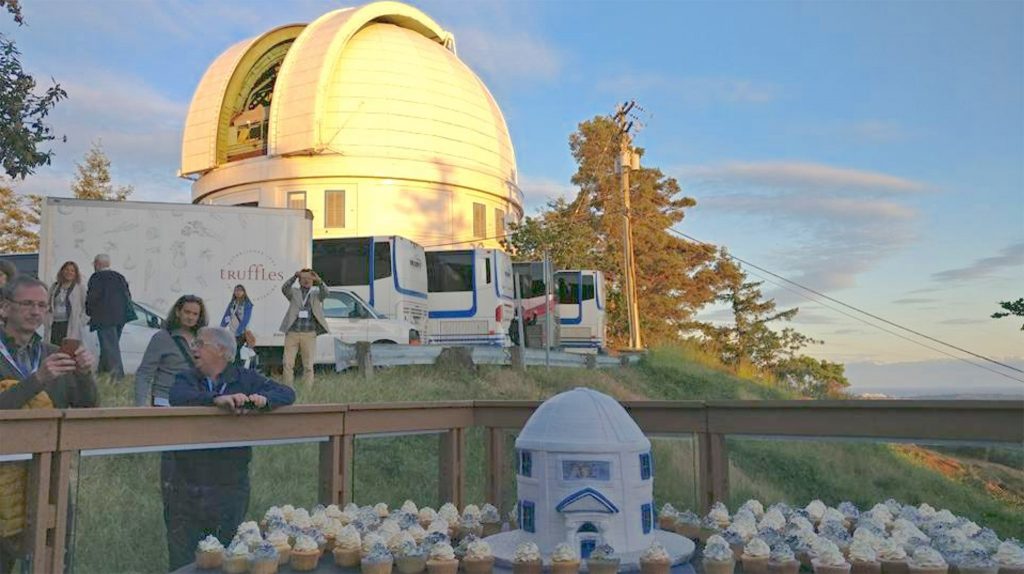Studying the most luminous galaxy in the universe

My name is Kevin Lacaille and I’m a 2nd year McMaster astrophysics Ph.D. student. I study some of the most distant galaxies in the Universe. Prior to studying at McMaster I received a BSc in Honours Physics with a minor in Mathematics and an MSc in Physics at Dalhousie University. Throughout my Master’s degree I spent one year conducting research at the James Clerk Maxwell Telescope atop Mauna Kea, a dormant volcano on the island of Hawaii.
This year, I attended the 49th annual meeting of the Canadian Astronomical Society (CASCA), held in Victoria, British Colombia. CASCA is the largest international conference for astronomy in Canada, hosting over 300 multidisciplinary scientists and exhibitors, for presentations and poster sessions, as well as networking and career events.
This year’s meeting celebrated 100 years of astronomy in Canada and focused on looking ahead to the exciting new opportunities and challenges that face the Canadian astronomical community as we begin our second century of astrophysical research. I hope to be one of the scientists leading this research with my work on the brightest galaxy in the universe.
The universe was a very different place 12 and a half billion years ago. Back then, the night sky appeared drastically different. Galaxies were constantly smashing together, leaving behind hot, luminous gasses, and deadly cosmic rays were flying all over the place from newborn stars and explosive black holes. Astronomers seek to learn about the early universe in order to understand how the world came to be, and some of the first galaxies ever created tell us just that.
One of the most amazing properties about outer space is that the further away we look the further back in time we see. Therefore, as we observe galaxies further away from us, we see snapshots of the universe in earlier times and we can watch how it evolved.
I want to understand galaxy formation and evolution so that I can understand how the Universe came to be. I use telescopes in the Antarctic and in Chile to stare deep into space, to peer back to the dawn of time. I spend hundreds of hours searching for galaxies, pointing these telescopes into the uncharted territories of outer space, and because of my work we have found the most luminous galaxy ever discovered. It existed 12 and a half billion years ago.
This galaxy is part of a pair of interacting galaxies, and seems to defy our current understanding of galaxy formation and evolution, as we would never imagine to find such an explosive galaxy when the universe was young. Our galaxy challenges the current understanding of galaxy formation and evolution, as the most up-to-date observations and simulations of galaxies seem to suggest that the Universe evolved in a way such that the most active galaxies would exist 1.5 billion years later than where we found ours.
Going forward, I’m going to continue with my research and try to understand how this galaxy and other “astronomical fossils” function, and share my findings at events like CASCA, to take what I have learned about the world 12 and a half billion years ago and apply it to our future.

Figure 1: Top: Two interacting galaxies residing 12.5 billion light years away from us. The galaxy on the right is the most luminous galaxy ever discovered in the Universe. Bottom: The South Pole Telescope in Antartica (credit: J. Callicchio, University of Chicago) and ALMA in the Atacama Desert in Chile (credit: B. Tafreshi, IAU/ESO).

Figure 2: McMaster Graduate students attended CASCA. Back row left to right: Joey Rucska, Melanie Demers, and Ian Roberts. Front row left to right: Hao He, Kevin Lacaille, and Jasper Grond.

Figure 3: The Dominion Astronomical Observatory with a cake model of it on Observatory Hill in Saanich, BC.


